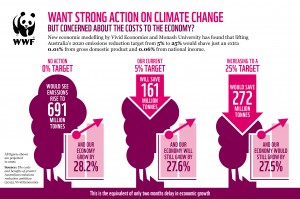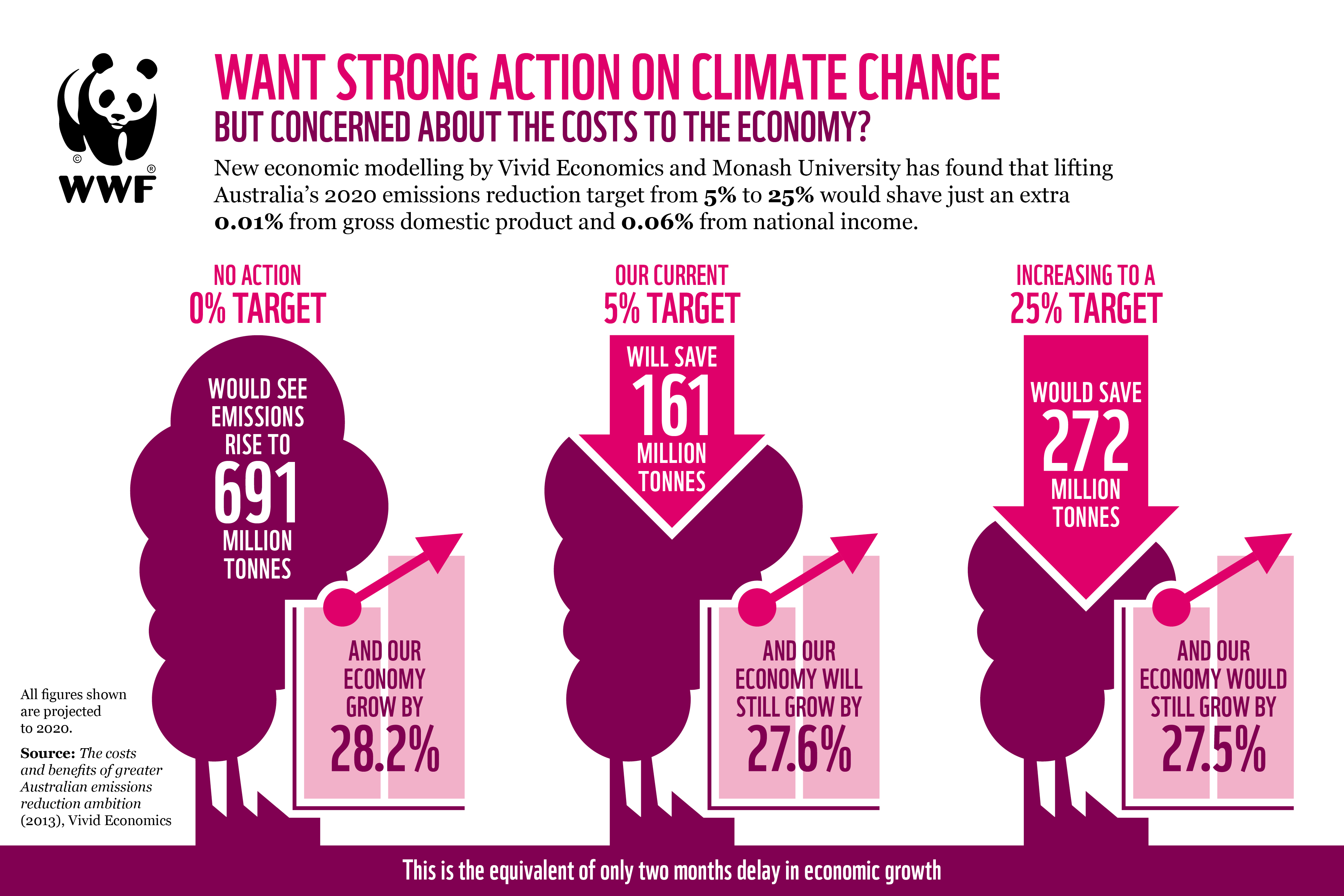CAN hopes Australia’s independent Climate Change Authority (CCA) had a useful time in Bonn gathering perspectives from Parties, in particular on how Australia’s actions may help or hinder the road to a 2015 global deal.
With carbon pollution blasting through 400ppm and many nations preparing to ramp up their efforts, we guess you heard some stern views on the (lack of) adequacy and fairness of Australia’s unconditional 5% target for 2020. The good news? WWF earlier this week revealed Australia could bump up its target from 5% by 2020 to 25% at virtually no extra cost to its economy. A lucky country indeed! You’d be mad not to, wouldn’t you? And while the cost to your GDP would be negligible, the kudos would be priceless.
In honour of your visit, ECO revisited Australia’s conditions for moving to 15% and maintains these were comfortably satisfied by the Cancun Agreements and Durban Platform, along with new reporting requirements for developing countries and land sector rules under the Kyoto Protocol. But it’s no secret that 15% falls well short of what a country with economic capability and clean energy resources like yours should be putting in. Wouldn’t you agree? And as your own Professor Garnaut has made clear, with a coastal population, rising costs from extreme weather and shifting rainfall threatening to wreak havoc for your farmers, no developed country has a stronger national interest in keeping the global temperature rise as far below 2°C as possible.
Needless to say, the best way for Australia to protect its national interest and at the same time protect the environment is to set targets and budgets that accord with the science (remember the 40% below 1990 levels?) and represent a fair and defensible share for Australia. To ECO, setting your 2020 target to at least 25% below 2000 levels and setting an ambitious long-term national carbon budget looks like a no brainer. Smart for the planet, smart for the economy, and smart for Australia’s world standing. ECO hopes the CCA got that message loud and clear.

